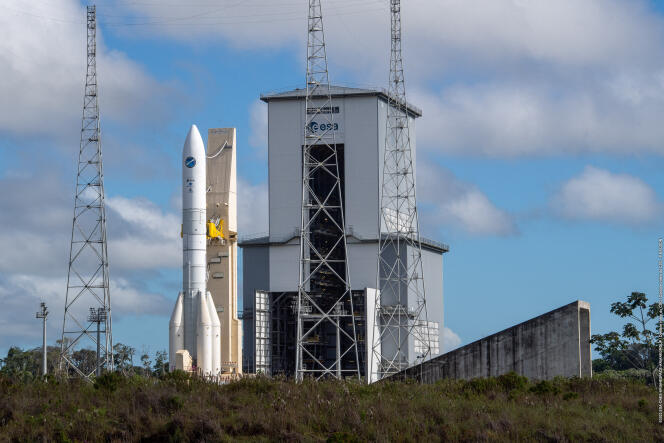An audit to get Ariane-6 out of the crisis. Meeting in Seville on Monday, November 6, the twenty-two member states of the European Space Agency (ESA) reached an agreement to ensure the operation of the future launcher. A conditional agreement, because it first involves limiting public funding to the maximum, to 340 million euros each year for three years from 2026.
France, prime contractor of the ESA program, will participate with 55.3%, followed by Germany (21%) and Italy (7.6%), the remainder being distributed among the ten other countries participating in the project. To do this, the manufacturers concerned, which are mainly the French ArianeGroup, the German MT Aerospace and the Italian Avio, are asked to reduce their costs by 11%. An audit is underway to achieve this. The objective would even be to bring public funding below 300 million euros over the years.
This financial commitment makes it possible to guarantee 27 Ariane-6 launches between 2026 and 2028. In addition, France, Germany and Italy have decided to go beyond these three years, by adding an additional eighteen months and by committing to 15 additional launches, or 42 launches by 2030. “This guarantees the solidity of the Ariane-6 economic model for the decade,” we estimate in Paris.
“A maiden flight as quickly as possible”
Reaching an agreement was a precondition for Paris before any progress on other subjects, facing Berlin which, for two years, had contested the management of the project and pleaded for an opening of the launcher market to competition. His opposition was all the more insistent as it was initially planned that after the 4 billion euros invested in Ariane-6 for its development, the exploitation phase after the sixteenth firing in 2026 would have to be self-financing. This is not the case because of the surge in raw materials and the return of inflation since the war in Ukraine.
“The priority is to bring Ariane-6 to its maiden flight as quickly as possible and get Vega-C back on track”, insisted the Director General of the ESA, Josef Aschbacher, the imperative for Europe being to regain autonomous access to space as quickly as possible, which it has lost in recent months. We will have to wait until 2024, both for Ariane-6 (launched four years late) and for the small Italian Vega-C rocket.
In return for continued support for Ariane-6, an agreement was reached to open the European launcher market to competition, in a space market destabilized for ten years by the arrival of Elon Musk with Space X.
You have 40% of this article left to read. The rest is reserved for subscribers.
